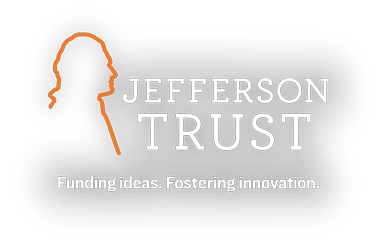
UVA’s Medical Design Program addresses the rapidly changing landscape of healthcare by teaching medical students design thinking as a framework for developing and leading new approaches to patient care throughout their careers.
“It’s more than a design course. You learn how to listen and what it means to truly empathize with a patient.”
—Dhruv Desai (SMD ’19)
Design thinking is a structured, team-based approach to problem solving and innovation that is widely taught, primarily in business schools. At UVA, the Medical Design Program offers first-year medical students the opportunity to use design thinking to improve patient care. Through a series of monthly hands-on ‘sprint-style’ design workshops and structured research experiences, students learn design-based approaches to clinically relevant skills like patient interviewing, synthesis of quantitative and qualitative research data, and use of prototypes to rapidly test and refine ideas in context of team-based healthcare environments. Students work directly with faculty physicians, patients, nursing, and other healthcare team members.
Since the 2015–16 academic year, teams of students have addressed topics such as: Preventing patient falls; Comfort in the Emergency Department waiting room; Transparency inpatient admissions; Reimagining the waiting room; Comfort and privacy for hallway bed patients; Empowering patients with information. In addition to the impact on student learning, data gathered during these exercises has resulted in actions taken in patient-care and design concepts at the medical center.

The program has been highly successful and popular with students since inception, and interest continues to grow. In addition, course alumni join a growing community of medical designers at UVA. Throughout their time at the medical school, they can participate in special events on grounds and put their design training to work through summer experiences, ongoing involvement in the program as peer mentors and teaching assistants, fourth-year research electives, and work as physicians-in-training and emerging healthcare leaders.
UVA is one of only a handful of medical schools in the country offering this type of program, and is already emerging as a national leader in the concept of applying design thinking to medicine. The teaching team leading the initiative was invited to present at Stanford’s Medicine X conference in both 2016 and 2018. Jefferson Trust funding has allowed the program to get off the ground, and in 2017, additional funding was secured through the School of Medicine to develop open-access, online learning materials to bring design thinking education to a broader audience of UVA medical students as well as students and faculty at other medical schools. You can learn more about this fascinating program at uvamedical.design.



 With the start of the 2018–19 fiscal year, the Jefferson Trust is excited to welcome James Aldigé as our new Vice-Chair. Although new to the Trust, James has been an active alumnus since his graduation from the College in 2003. He is a member of the Alumni Association’s Board of Managers, sits on the reunion giving committees (additionally serving as his 15th Reunion co-chair), participates in the Jefferson Scholars National Selection Committee and the Advisory Board for the UVA Licensing and Venture Group seed fund, is Co-chair of the David Magoon Jefferson Scholarship Initiative, and guest lectures at the Darden School of Business.
With the start of the 2018–19 fiscal year, the Jefferson Trust is excited to welcome James Aldigé as our new Vice-Chair. Although new to the Trust, James has been an active alumnus since his graduation from the College in 2003. He is a member of the Alumni Association’s Board of Managers, sits on the reunion giving committees (additionally serving as his 15th Reunion co-chair), participates in the Jefferson Scholars National Selection Committee and the Advisory Board for the UVA Licensing and Venture Group seed fund, is Co-chair of the David Magoon Jefferson Scholarship Initiative, and guest lectures at the Darden School of Business.


